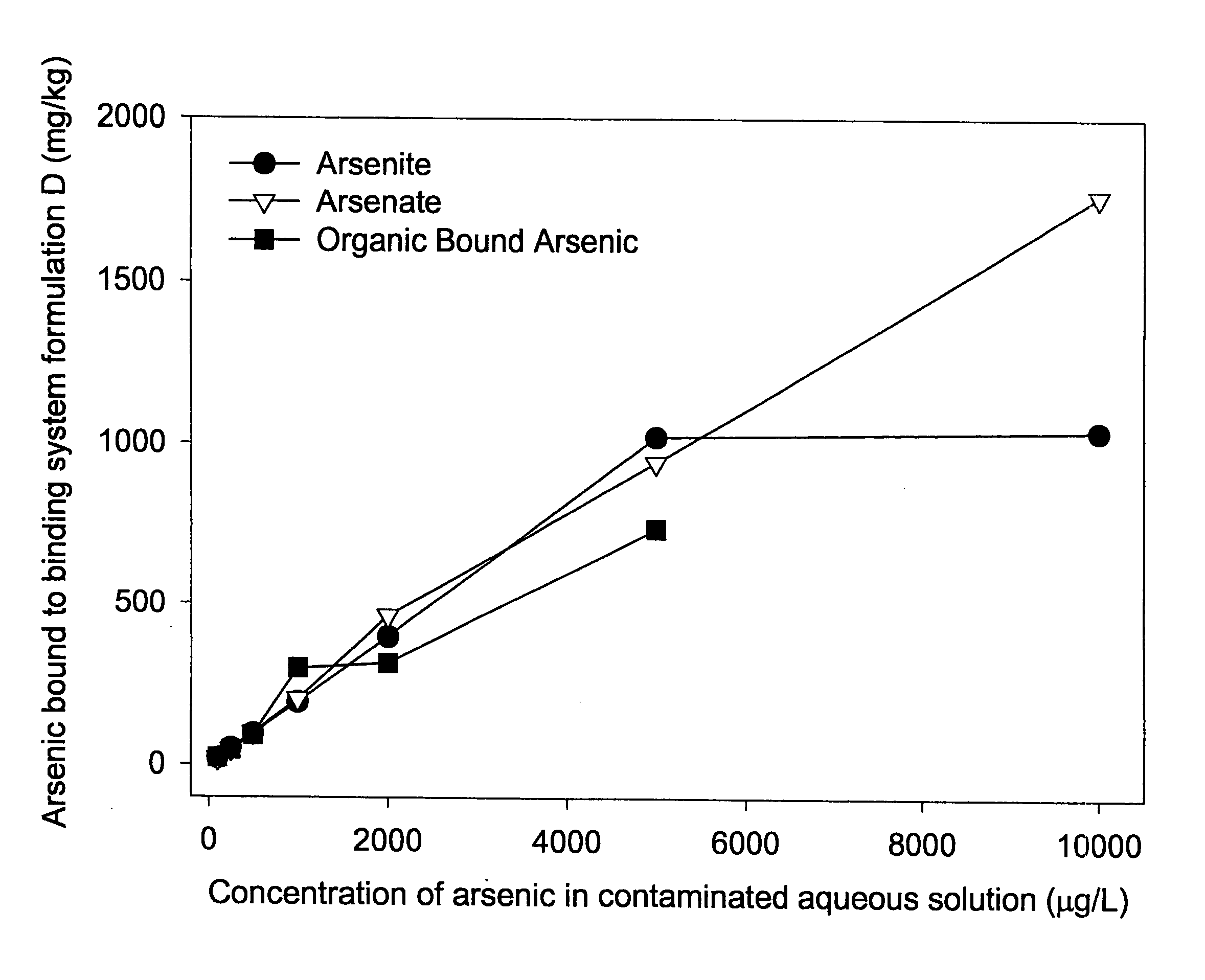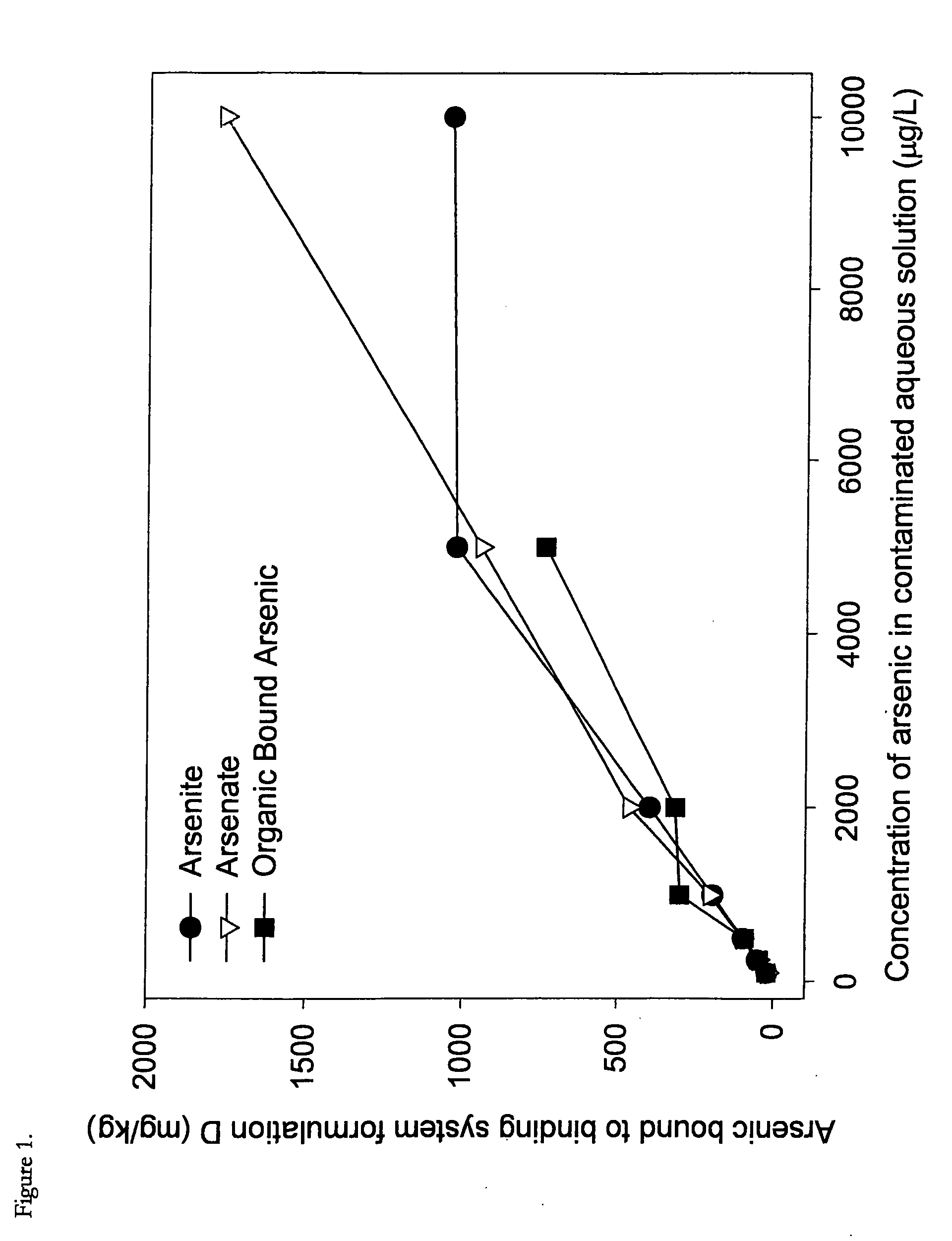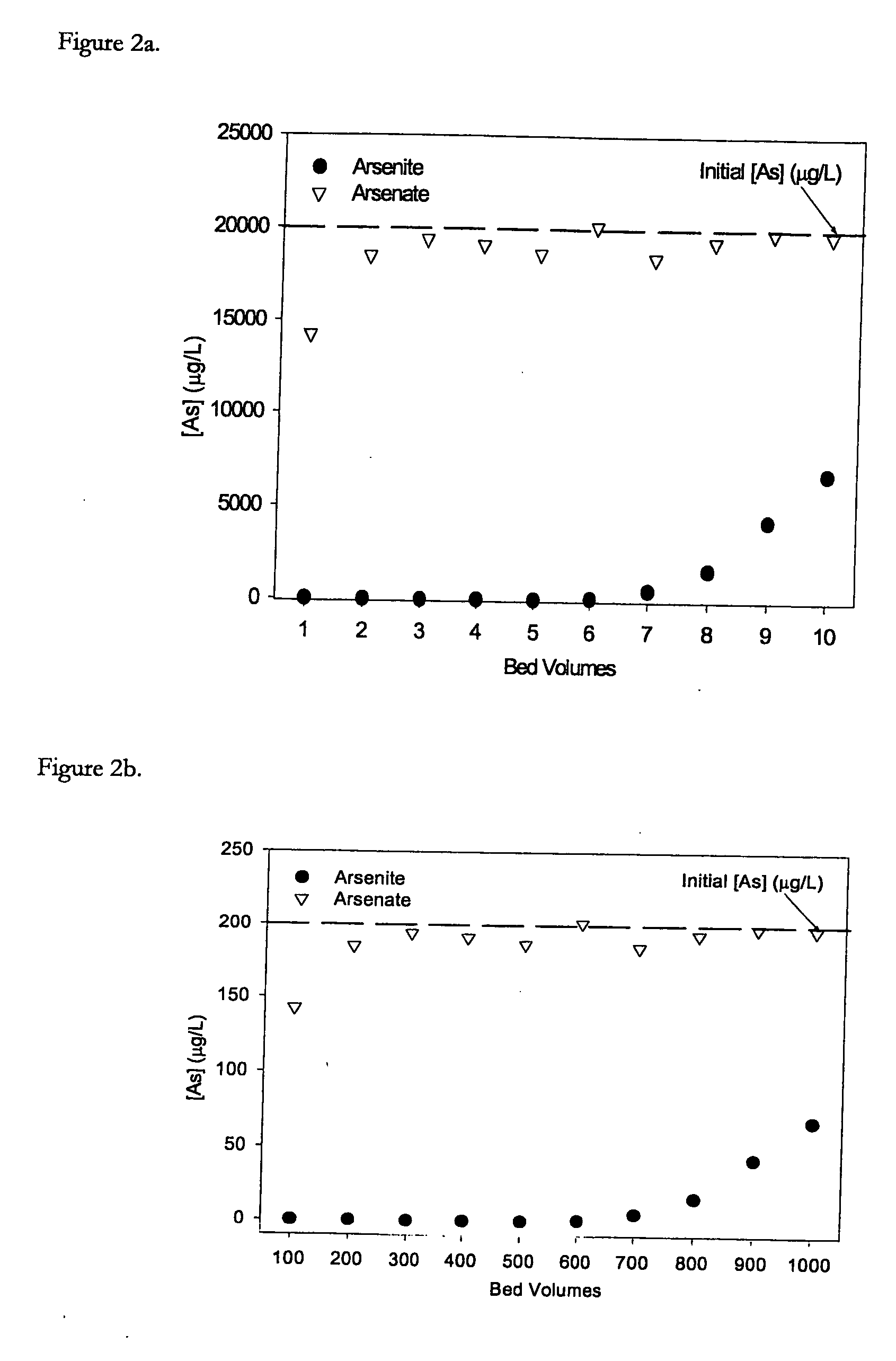Method and material for water treatment
a technology of water treatment and water sludge, applied in water/sewage treatment, water/sludge/sewage treatment, chemistry apparatus and processes, etc., can solve the problems of limited practical use in low-volume-flow systems, high volume of toxic metal-laden solid waste, and more complex systems, so as to improve the production of iron oxy-hydroxides and improve the production of arsenic binding sites
- Summary
- Abstract
- Description
- Claims
- Application Information
AI Technical Summary
Benefits of technology
Problems solved by technology
Method used
Image
Examples
Embodiment Construction
[0034] The present invention is directed to a new and improved method for the immobilization of organic and inorganic toxic metal species, such as monomethyl arsenate, arsenates and arsenites, by a volcanic rock mined from ashflow tuffs, recycled minerals from anthropogenic brick, or said minerals combined with oxidized iron derivates and zero valent iron. This combination of materials is then heated at greater than 105° C. to dryness, re-wetted and heated at greater than 105° C. to dryness. This is repeated multiple times. Henceforth defined as the “binding system”. This is postulated to improve the production of arsenic binding sites on the formulation contents and improve the production of iron oxy-hydroxides in the material. In accordance with the preset invention, a contaminated aqueous solution is contacted with the binding system. The target metals form co-precipitates, mixed precipitates and / or are adsorbed to oxidized iron derivatives, or are reduced by the zero valent iron...
PUM
 Login to View More
Login to View More Abstract
Description
Claims
Application Information
 Login to View More
Login to View More - R&D
- Intellectual Property
- Life Sciences
- Materials
- Tech Scout
- Unparalleled Data Quality
- Higher Quality Content
- 60% Fewer Hallucinations
Browse by: Latest US Patents, China's latest patents, Technical Efficacy Thesaurus, Application Domain, Technology Topic, Popular Technical Reports.
© 2025 PatSnap. All rights reserved.Legal|Privacy policy|Modern Slavery Act Transparency Statement|Sitemap|About US| Contact US: help@patsnap.com



